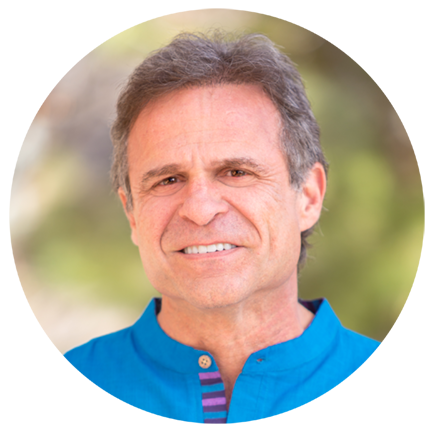Trauma and addiction are connected. After a traumatic event, your emotional capacity may change. You might have flashbacks, or be triggered by events that remind you of what happened. And in response, you’ll likely develop coping strategies to deal with that sensitivity. For many people, substance use feels like an easy way to manage difficult emotions.
Because of this, there’s a high rate of addiction among people with a history of trauma. In order to heal from either of these concerns, it’s important to treat addiction and trauma at the same time. The Sanctuary’s holistic treatment program is a powerful way to begin this healing journey.
By the Numbers: Correlating Trauma and Addiction
Researchers have found a complex relationship between trauma and addiction. More data is needed to understand the exact dynamic between the two, but the information we do have paints a clear picture. People with one of these conditions are far more likely to have the other.
- 46.4% of people who have PTSD at any point in their lives have a co-occurring substance use disorder.
- 22.3% of people with PTSD meet have substance dependence, but not a substance use disorder.
- 34.4% of people with post-traumatic stress disorder also have an addiction.
- People with PTSD are two to four times more likely to develop an addiction than the general population.
Some studies have also focused on various populations, suggesting risk factors for certain groups.
- Up to 59% of youth with PTSD go on to develop an addiction.
- Between 30-59% of women with an addiction also show signs of PTSD.
- Of the U.S. Veterans who served in Vietnam or later and have been diagnosed with a substance use disorder, 41.4% have co-occurring PTSD.
Trauma Can Lead to Addiction
After trauma, many people turn to drug use. In particular, childhood trauma can make you more vulnerable to addiction as an adult. One study found that experiencing or witnessing abuse and neglect during early childhood “alters brain development.” This can make it harder for you to manage stress, which increases your risk of addiction.
This may be due to the impact of trauma on emotion regulation. Trauma can color your daily experience of life, causing extreme responses to seemingly innocent stimuli. For example, if you once witnessed a violent event in a cafe, you might be triggered by the smell of coffee.
Triggers can be inconvenient, embarrassing, or even retraumatizing. It’s hard to stay focused if you’re having a panic attack during a breakfast meeting. And trying to avoid triggers can be very isolating. If you have to face situations that bring up unwelcome feelings, you might turn to other ways of controlling your feelings—like substance misuse.
At first, it can feel like drugs give you more control. By artificially changing what you feel, you may be able to face triggers without having a visible response. But that behavior isn’t sustainable. First, it prevents you from processing the trigger and prevents you from doing the important work of healing. Drug use can also cause more trauma.
The Trauma of Addiction
Not all substance use disorders are due to trauma, but addiction itself can be traumatic. According to one study, “illicit drug use can increase the risk of PTSD” in a number of ways.
Addiction is associated with high-risk behaviors. The act of buying or using drugs might put you in dangerous situations, in which you risk your own safety because of your addiction. Some drugs also impair judgment, leading people to do unsafe things while using them. Over time, your addiction may damage your closest relationships, leaving you with little social support when you need it most.
Not every trauma has a long-term effect on mental health. However, people with substance use disorders are very vulnerable to ongoing symptoms following trauma. Because drugs can change your brain chemistry, you may be less able to withstand the emotional impact of a difficult event.
If substance use is already one of your main coping strategies, and then you develop new mental health symptoms, your addiction can become more severe. And that pattern often becomes a cycle. Addiction leads to trauma, and trauma feeds addiction. It can be difficult to break out of that pattern without help. But with expert support, you can learn to respond to triggers in a healthy way.
Skills for More Than Survival
Your coping mechanisms exist for a reason. Trauma survivors develop the skills they need to get through immensely difficult situations—and in the short term, some of them can be very valuable. But the skills that help you survive aren’t always the same skills you need to live a life you love.
For example, it’s common for people to dissociate during or after trauma. Dissociation is mentally “checking out” of an experience. The International Society for the Study of Trauma and Dissociation describes this as “a ‘mental escape’ when physical escape is not possible.” During the event itself, it’s easy to see why someone would seek out safety in any way they can.
Following trauma, those same strategies can stand in the way of healing. Dissociating during lunch with a trusted friend doesn’t protect you; it just interferes with your friendship. The same logic applies to many other trauma-based responses.
With the right treatment, you can learn to use your coping skills more effectively. You can also integrate healthier behaviors into your daily routine, and start moving toward a balanced and sustainable lifestyle.
Choose What Supports Your Healing
For many people, the process of healing from trauma begins with accepting themselves, just as they are. There’s always room for improvement—but blaming and shaming yourself into growth just isn’t effective. Instead, you can learn to recognize the strengths you already have, and integrate them into your recovery process.
At The Sanctuary, we encourage our clients to heal holistically and come into alignment with their values. Individualized treatment lets you choose between methods that support your goals for healing. And by combining different types of therapy, you can center your own needs, instead of following a set path toward recovery.
Healing the Mind
Trauma can be overwhelming—physically, emotionally, and spiritually. Clients engage in several healing modalities during their time at The Sanctuary, including evidence-based therapy and alternative treatments. This allows you to address every aspect of recovery in an integrated way. “Holistic often can be defined as forgetting about Western medicine,” says Program Director Kelley Alexander, J.D., “and that’s not holistic. That’s not looking at the whole.”
Research has found that certain therapies are especially helpful for treating trauma and addiction. Many of these techniques are available for Sanctuary clients, including the following:
- Cognitive-behavioral therapy (CBT) teaches clients how to respond to difficult thoughts, feelings, and events in a healthy way. You’ll work closely with a therapist to learn and then practice these skills. This modality can be very helpful for people with co-occurring diagnoses of trauma and addiction.
- Acceptance and commitment therapy (ACT) teaches that you can feel whole by living in accordance with your own values. Clients learn to accept painful emotions as they arise, and change their behavior instead of resisting what they feel. These skills can help you handle triggers that would otherwise lead to a feedback loop between addiction and trauma.
- During eye movement desensitization and reprocessing (EMDR), clients revisit past traumatic events in the safe context of therapy. You’ll use a variety of techniques—like eye movements or tapping—to reframe your own response to these difficult events.
Technically, these modalities are classified as talk therapies or behavioral therapies. However, the line between mental and physical health is hazy at best. This is especially true for clients recovering from trauma because traumatic experiences can have a direct biological impact on body and brain function.
Healing the Body
Emotional trauma can cause physical distress. Whether or not you have a visible injury, you may experience physical symptoms after a trauma. Holistic therapies honor the complex link between mental and bodily wellness. At the Sanctuary, you can heal your mind and body together, using these techniques:
- Somatic Experiencing, like EMDR, invites clients to revisit painful memories in a safe environment. This therapy is more focused on the body, and teaches you to notice the sensation of a triggered response. You’ll learn how to regulate your reactions to strong emotions, and to feel safer in your own body.
- Nutrition is an important part of treatment at the Sanctuary. Eating healthy meals each day supports every aspect of recovery. By improving your physical health, you can practice caring for your body even if you still have dissociative symptoms.
- Yoga and movement therapies invite clients to reconnect with their own power. If these activities are new to you, you can gain confidence by learning a new skill. People with more experience can rebuild healthy habits and physical strength, simultaneously.
Some physical activities, like yoga, are related to spiritual practices. At the Sanctuary, you’ll also be invited to heal through activities that are even more focused on spiritual growth.
Healing the Spirit
Data shows that a renewed focus on spirituality can help people find meaning after trauma. Connecting with your higher self is a vital part of recovery.
- Energy medicine (EM) refers to a number of therapies that work with the body’s energetic field. For example, Reiki practitioners channel energy to facilitate a natural healing response. These gentle techniques can help you feel at home in your own body.
- While many think of mindfulness and meditation as spiritual practices, this approach has also made its way into Western therapies. Clients learn how to ground themselves in the present moment. The goal is to notice your thoughts and feelings, accept them, and let them go, instead of letting yourself act on learned responses to triggers.
- During sound healing, you’ll listen to a soundscape designed to bring about a certain physical, emotional, and/or spiritual response. These sessions are usually performed live by musicians and healers.
Spiritual growth is a very personal experience. You may find that some of these techniques aren’t right for you. And that’s okay. That realization can be an important part of recovery. The act of choosing how you’ll heal can be empowering.
Transforming Your Life
No matter what you’ve been through, you have the right and the ability to decide how to heal. By integrating your physical, mental, and spiritual experiences at The Sanctuary, you can learn how to meet your own needs in a sustainable way. That insight is the basis of a meaningful life.
You may not be able to change the past—but you can heal from it. Contact our admissions team today to learn how we can help.

He is the Founder, Administrator, Counselor at the Sanctuary at Sedona.
He has a BA in Political Science and is currently Senior teaching staff at Four Winds Society, an international school of energy medicine. His credentials also include being an Ordained Minister; a Certified Shamanic Breathwork® Facilitator; a Founding Member Society for Shamanic Practitioners; a Member of Association for Comprehensive Energy Psychology; a Member of the National Institute for Holistic Addiction Studies. [email protected]

